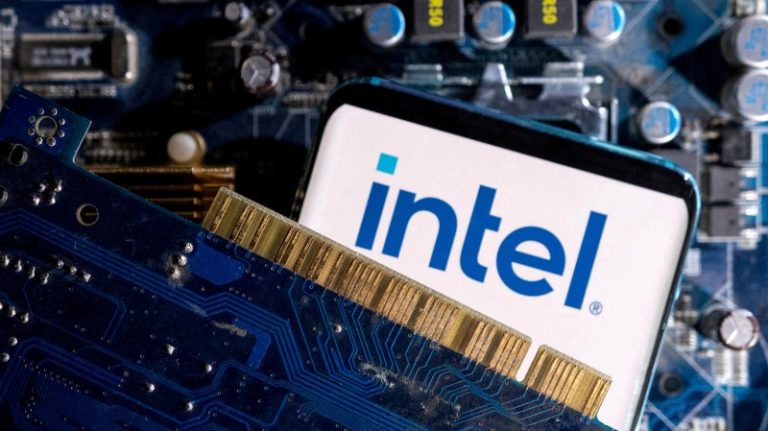I fell for a bike scam on Facebook. Why won’t PayPal refund my £615?
I saw a second-hand Brompton bicycle listed on Facebook Marketplace in June and messaged the seller, asking to buy it. The seller seemed genuine and friendly. She said if I paid the £615 through PayPal using the friends and family option, the bike would arrive more quickly.
I agreed and sent £615 to her. But the bike never arrived. The seller has not replied to any of my messages asking where it is. PayPal said it would not reimburse me because payments made using the friends and family option are not covered by its buyer and seller protections. Is there anything you can do to help?Jon Swallow, Suffolk
I’m sorry you fell for this trick. Scammers have been exploiting this loophole for years. PayPal offers two payment types: friends and family, and goods and services. The friends and family option allows you to send money to people you trust without having to pay a fee, but the downside is that you aren’t covered by its buyer-seller protection scheme. That means you won’t be able to get a refund if what you paid for doesn’t arrive or if it comes but does not match the seller’s description.
Unfortunately, fraudsters have cottoned on to this and have been encouraging unwitting buyers to pay this way because it is harder for them to get their money back.
You admit that you should have checked what the friends and family payment option was before handing your money over. But mistakes happen, so I asked PayPal if it could take a look at your case again.
• A criminal cloned my number plate and racked up £260 in fines
PayPal agreed to give you a full refund. It said: “It is a common tactic of fraudsters to pressure buyers into paying via a friends and family payment, so it should be a warning sign when sellers suggest this method and you should refuse.”
Facebook is a great place for bargains, but beware of scammers. The amount of money lost to Facebook scams rose 366 per cent from about £7 million in 2020 to £32.6 million in 2022, according to the Good Money Guide, a consumer site.
When buying anything from someone through social media, it is best to pay by cash and collect the item in person, ideally in a public place, so that you can check that the product is what was advertised and is in good working condition before you hand over your money.
If paying by cash is not an option, choose a method that offers some protection, such as PayPal’s standard payment option. Never pay by bank transfer or by wiring money through a service such as Western Union because you will have no recourse if anything goes wrong.
And always remember the age-old motto: if a deal seems too good to be true, it probably is.
• HMRC said I was scammed and won’t pay my £5,000 rebate
I have a mobile phone with Three. When it broke, the company told me that if I paid for the repair myself it would reimburse me, but it has backtracked on this agreement and now I’m £299 out of pocket.
I signed up for a two-year contract with Three in April 2022, which came with a new iPhone 13 Pro. I left the handset unopened for a year because my priority was the data, calls and texts, which were at a lower cost than the contract I was previously on. In May last year I started using the handset because it felt silly to still be using my old phone.
However, just as my contract finished in April this year, the camera stopped working and I couldn’t log into my apps, including my banking app.
I took the phone to my local Three branch to see if I could get it fixed. I explained that I had been using it for less than a year, and was told that it was still in warranty and that I would need to get the phone repaired myself and then recoup the cost from Three.
I got my phone fixed and contacted Three’s customer services to get the money back. But I was then told the phone was not in warranty and that I would not be reimbursed. Can you help? I would never have paid for the repair work if I had known I would not be compensated.Michael Taylor, north London
Lucy replies
Handsets usually come with a manufacturer’s guarantee. That means if your phone breaks or isn’t working properly, you can get a free repair from the manufacturer or the company with which you took out the phone contract.
All of Three’s handsets come with a manufacturer’s warranty; for Apple devices the warranty is valid for 12 months and for most other devices it is 24 months. Warranty periods start at the beginning of your contract date.
Because you waited a year to use the handset, you didn’t discover the fault until after the phone’s 12-month warranty had ended. You admit that you should have started using the new handset as soon as it was delivered, because that way you would have discovered the faults before the guarantee had expired.
However, it did seem to me that there was a miscommunication about the phone’s warranty, so I asked Three if anything could be done to help you. Three said there was no record that a member of staff accessed your account on the day you visited the store. This means that you would have been given generic warranty information, not specific information about your phone, Three said.
But it has agreed to reimburse you the £299 cost of repair as a gesture of goodwill, and I’m pleased this issue has been put to bed.
If your mobile phone has broken but you are struggling to get a refund, replacement, or free repair, then you first need to write a complaint to the company.
Under the Consumer Rights Act 2015, products sold by companies must be fit for purpose, as described, and of satisfactory quality. If your phone breaks outside the warranty period but you are still in contract, you could argue that you were sold a phone that was not fit for purpose or of satisfactory quality because it has not lasted the full term of the contract.
If you are still struggling to get a resolution, then you can complain to the Communications Ombudsman or the Communications & Internet Services Adjudication Scheme, run by the Centre for Effective Dispute Resolution. Find out which scheme the company you wish to complain about is signed up to by searching for its name on both websites.
In July I checked my Revolut account and was surprised to find two identical transactions worth $25.46 each — about £20 — which I didn’t recognise.
The transactions were made to a company that sells mobile phone and broadband top-up cards. I’ve never used a service like this. I blocked the company from taking any more money from my account, alerted Revolut and asked for the transactions to be reimbursed.
Revolut said that both the transactions were made by me, because they were made using a virtual card that was only accessible via its app. The value of the transactions isn’t my main issue, I’m more concerned about how these payments were made. Is my account safe?Jeremy Wescombe, Buckinghamshire
Lucy replies
Being scammed is incredibly alarming. It can make you question your security and Revolut’s reaction to this has been poor.
You were a victim of an unauthorised transaction scam. This is where a fraudster uses your account details to make a payment without your knowledge or consent. You’re not alone — about £708.7 million was lost to unauthorised transactions made on payment cards, remote banking and cheques in 2023, according to UK Finance, a trade body. In the same year, the value of card identity thefts increased 53 per cent to £79.1 million.
• I acted fast, but Monzo didn’t halt £2.7k horse trailer scam
Banks have to issue refunds for unauthorised transactions as long as you have not acted fraudulently or with “gross negligence” — for example, if you haven’t properly protected your card details, PIN or passwords to your account.
You felt frustrated that Revolut, a financial firm that is popular as a way of holding foreign currency or making payments abroad, was refusing to believe that you had been scammed, and were left worried about whether your account was safe or not. I asked Revolut to investigate what happened and explain the fraud.
Revolut acknowledged that these were unauthorised payments, but said there were no indications that your account had been breached. It is investigating a number of other possibilities, including a “BIN attack” when scammers use Bank Identification Numbers — the first six to eight digits of a credit or debit card — to then generate valid complete card numbers to make low-value transactions on websites with weak security.
Revolut has now refunded you £40.14. It said: “We are very sorry to hear about Mr Wescombe’s case, or any instance where our customers are targeted by ruthless and highly sophisticated criminals.”
• Seven Facebook Marketplace scams to watch out for
If you think you have been scammed, freeze your cards immediately, alert your bank and reset any sensitive passwords. Report the scam to actionfraud.police.uk or by calling 0300 123 2040.
Ask your bank for stolen funds to be reimbursed. If your bank refuses, then follow its complaints procedure. If it has been eight weeks since you complained and you don’t have a refund, you can go to the Financial Ombudsman Service for help. If it rules in your favour, the ombudsman can order the bank to refund you, along with any awards of compensation.Jill Insley is away
Email [email protected] or write to Question of Money, The Sunday Times, 1 London Bridge Street, London SE1 9GF. Please send only copies of original documents. Letters should be exclusive to The Sunday Times. Advice is offered without legal responsibility and we regret that we cannot reply to everyone who contacts us.






